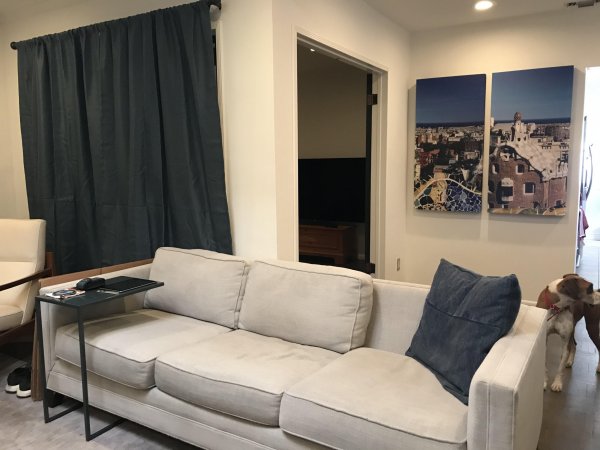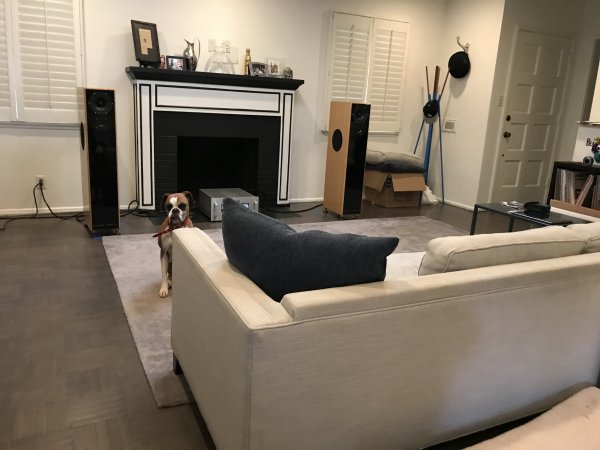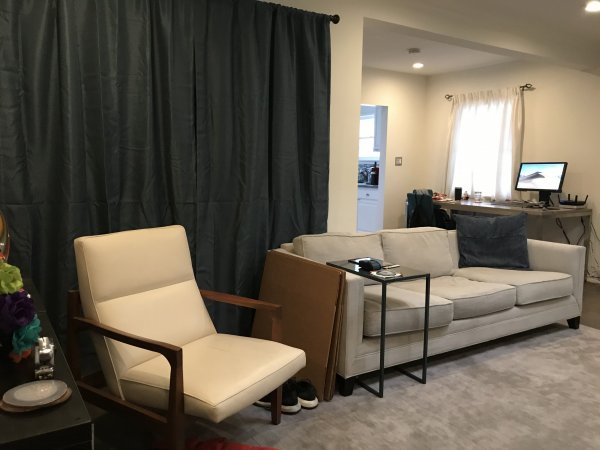Hey Duke, thanks for your comments - I've updated the thread as a result. I'll be curious what you think.
Thanks for the updates! A picture is worth 1.0k words...
I like your choice. There is no longer a case to be made for uber-wide coverage, and you have more space behind the speakers, which helps soundstage depth.
Imo there are probably still some worthwhile advantages to the Thrax approach. Assuming that horn is indeed approximately constant directivity and has negligible coloration (which is apparently the case based on what you said about them), timbre and freedom from listening fatigue are likely to be very good, assuming Thrax has their other ducks in a row (which apparently they do).
The ears derive timbre not only from the first-arrival sound but also from the reflections, so we want the reflections to sound very much like the direct sound. A uniform radiation pattern does this because most of the reflected energy starts out as off-axis sound. The tonal balance we hear is essentially a weighted average of the direct and reverberant sound. At the risk of over-generalizing, the more spectrally-correct reverberant energy we have in the room, the richer the timbre. SoundLabs and MBLs and concert halls tend to do this well.
(Virtually everything in audio being a trade-off, one thing that a wide-pattern speaker like the Thrax trades off versus a narrow-pattern speaker like the Avantgarde is, dynamic contrast. Wide pattern = more energy out in the reverberant field = a higher "noise floor", and a higher noise floor= less dynamic contrast. So all else being equal [which it never is], in most rooms a wide-pattern speaker tends to convey less dynamic contrast than a narrow-pattern speaker.)
The listening fatigue thing is a bit more complicated. The ear/brain system is constantly analyzing incoming sounds to see if they are new sounds or reflections (repetitions of a recent new sound). What the ear looks at is, the spectral content. If it
sounds like a reflection, then it
is a reflection. But, what if it only sounds
kinda-sorta like a reflection because the spectral content is skewed? In that case, the ear/brain system has to use more CPU power to correctly classify the sound as a reflection. And over time this additional CPU usage causes the processor to overheat, and the result is listening fatigue... and in extreme cases, a head-ache.
I think the Thrax system probably does an exceptionally good job with the reverberant field, and therefore should have good timbre and be enjoyable for hours on end.
Finally, when the reverberant sound has a similar spectral balance to the direct sound, the tonal balance holds up well throughout the room because you aren't so reliant on the direct sound.
Imo one way to quickly check on the reverberant field (and by extrapolation to make an educated guess about long-term listening enjoyment) is to listen from outside the room through an open doorway, with no line-of-sight to the speakers. Assuming the room isn't overdamped, this will give you a useful idea of how spectrally correct the reverberant field is. And assuming there isn't some harshness or other annoying artifact in the direct sound, a natural-sounding reverberant field bodes well for long-term fatigue-free listening. Note that a live saxophone or piano or little-girl-with-guitar would sound convincing through that open doorway.
... but maybe the Lyra monitors and a
swarm of Duke's subs is the better idea

Dude. You rock.


















